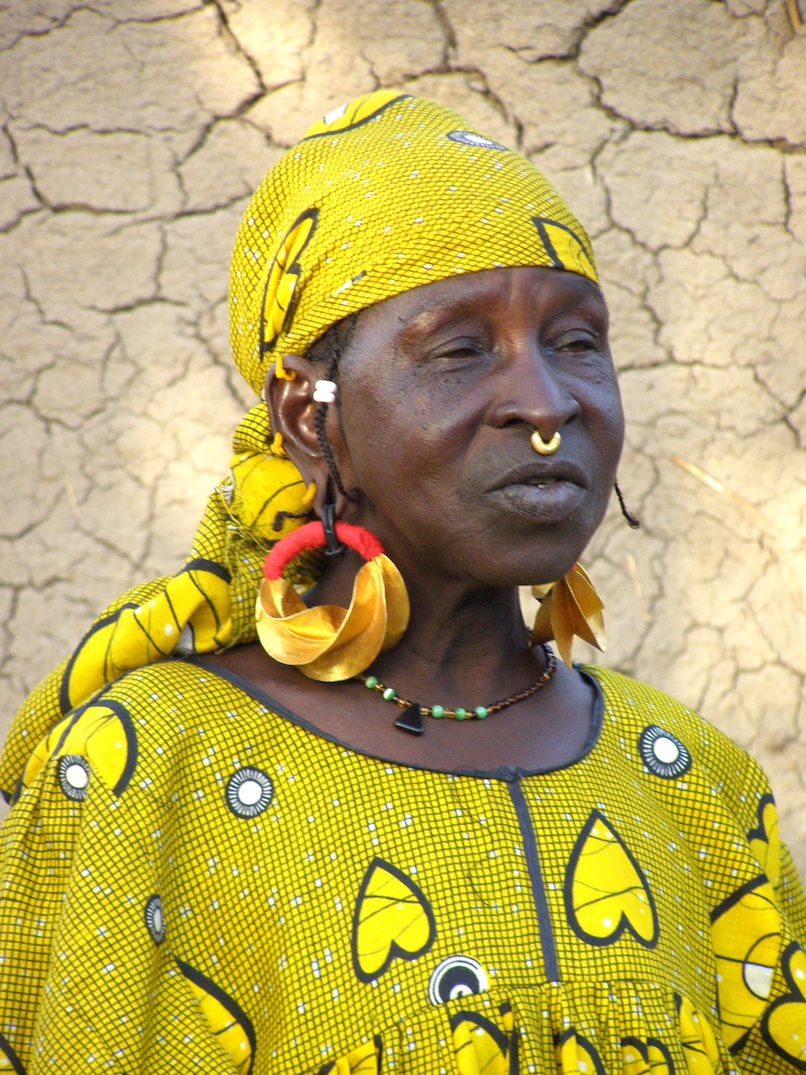Sociocultural theories of attraction
 Finding the perfect partner may have more to do with environmental and cultural factors than we would like to think. It shouldn't be a surprise that it is easier to find a date on a college campus than if you work for a small start-up company outside of a major city.
Finding the perfect partner may have more to do with environmental and cultural factors than we would like to think. It shouldn't be a surprise that it is easier to find a date on a college campus than if you work for a small start-up company outside of a major city.
Psychologists in the sociocultural approach argue that there is no empirical proof that cognition precedes any form of decision-making. Robert Zajonc argues it is more likely that decisions are made with little to no cognition. Instead, he says that we first like something and then we rationalize our decision. In other words, we make judgments first and then seek to justify them by rationalization.
Zajonc proposed that the mere-exposure effect plays a key role in the formation of a relationship. The mere exposure effect is a psychological phenomenon by which people tend to develop a preference for things simply because they are familiar with them. The more frequently we are exposed to something, the more we like it.
In Zajonc's (1968) original study, he showed a set of Michigan State University seniors photos of male faces. The participants were told that they were taking part in a study of "visual memory." The participants were shown each photo for only two seconds. The faces were shown with different rates of frequency to different groups. Each time that they saw a photo, they were asked to rate how much they would like the man on a 7-point scale. The original study provided the following graph of the results.
 As you can see, when the participants were exposed to the image more frequently, their rating of the likeability of the man in the photo was significantly greater than when they had only seen the image once.
As you can see, when the participants were exposed to the image more frequently, their rating of the likeability of the man in the photo was significantly greater than when they had only seen the image once.
However, looking at photos and making a judgment about somehow's likeability has pretty low ecological validity. What would happen if we carried out a similar study under naturalistic conditions?
Research in psychology: Moreland and Beach (1992)
 Moreland and Beach (1992) carried out a field experiment to test the validity of the Mere Exposure Effect. The sample was made up of 130 undergraduate psychology students (63 male; 67 female). All of the participants were taking a personality psychology course in a large lecture hall.
Moreland and Beach (1992) carried out a field experiment to test the validity of the Mere Exposure Effect. The sample was made up of 130 undergraduate psychology students (63 male; 67 female). All of the participants were taking a personality psychology course in a large lecture hall.
The experiment used confederates - four women who posed as students in the course. Each of the women attended a different number of class sessions. Woman A attended no session; woman B attended 5 sessions; woman C attended 10 sessions; woman D attended 15 sessions. The choice of which session to attend was determined randomly.
For each visit, the same procedure was followed. One of the women arrived at the lecture hall a few minutes before class began, walked slowly down toward the front of the hall, and sat where she could be seen by all the other students. During the lecture, she simply listened and took notes. A few minutes after class ended, the woman rose, walked slowly up toward the back of the hall, and left. In order to create conditions of mere exposure, none of the women was allowed to interact with the other students.
At the end of the semester, the participants were shown slides of the four women and asked to fill in a survey in which they were asked to rank the women on a 1 - 7 scale for several traits - including attractiveness, popularity, intelligence, warmth, honesty, and success. They were also asked whether they knew the woman or if she was familiar.
The data indicated that male and female students responded to the four women in similar ways. Sex was therefore not a confounding variable. The participants did not find the women familiar, however, the more classes a woman attended, the more positive traits she was believed to have. Below you can see the scores (out of 7) for the level of attractiveness.
| No visits | 5 visits | 10 visits | 15 visits |
| 3.62 | 3.88 | 4.25 | 4.38 |
It appears that the Mere Exposure Effect also may be observed under naturalistic conditions.
The role of culture
Much of the research in this unit so far has relied on Western participants for the sample. However, research has shown that culture has an effect on whom we find attractive and how relationships are formed. Since as a result of globalization our society has become more diverse, it is important that psychologists attempt to look more carefully at the role of culture in relationships.
 Cultural psychologists argue that passionate love is largely a western phenomenon. In the West, marriage is seen as the culmination of a loving relationship. In cultures where arranged marriages occur, the relationship between love and marriage is the other way round. In a conversation about the high US divorce rates with someone from a non-western culture, Matsumoto (in Matsumoto & Juang, 2004) noted that he received the following response: The reason for this difference is quite clear. You Americans marry the person you love; we love the person we marry. This was supported in a study by Gupta & Singh (1982) who surveyed 50 couples and found that couples in India who married for love reported diminished feelings of love if they had been married for more than five years. Those who had arranged marriages reported higher levels of love.
Cultural psychologists argue that passionate love is largely a western phenomenon. In the West, marriage is seen as the culmination of a loving relationship. In cultures where arranged marriages occur, the relationship between love and marriage is the other way round. In a conversation about the high US divorce rates with someone from a non-western culture, Matsumoto (in Matsumoto & Juang, 2004) noted that he received the following response: The reason for this difference is quite clear. You Americans marry the person you love; we love the person we marry. This was supported in a study by Gupta & Singh (1982) who surveyed 50 couples and found that couples in India who married for love reported diminished feelings of love if they had been married for more than five years. Those who had arranged marriages reported higher levels of love.
In a more recent study, Regan et al (2012) studied 58 Indian couples living in the US. 28 couples were in arranged marriages and 30 were in “love-based” marriages. They were asked to complete surveys to measure their marital satisfaction, commitment, and passionate love. The researchers found no difference between participants in arranged and love-based marriages; high ratings of love, satisfaction, and commitment were observed in both marriage types.
Levine et al. (1995) found that individualistic countries were more likely to rate love as essential for marriage and to agree that the disappearance of love is sufficient reason to end a marriage. Dion & Dion (1993) have noted that in traditional societies, marriage is often seen as more than just the union of two individuals; it is held to be a union and alliance between two families. Whereas Americans tend to view marriage as a lifetime companionship between two individuals in love, people of many other cultures view marriage more as a partnership formed in order to have children and for economic and social support.
In one of the largest cross-cultural studies on relationships ever undertaken, Buss (1989) gave two questionnaires regarding mate selection to more than 10,000 respondents from 37 cultures. There were many striking similarities in the responses. In 36 out of 37 cultures, women ranked financial prospects as more important than males. In all 37, men preferred younger mates, while women preferred older mates. In 23 of the cultures, males rated chastity as being more important than women did. The degree of agreement in sex differences across cultures led Buss to view mate selection preferences as universal, arising from different evolutionary selection pressures on males and females. However, there were some interesting differences:
- USA: Love ranked first.
- Iran: Love ranked third. Ranked high: education, intelligence, ambition, chastity.
- Nigeria: Love ranked fourth. Ranked high: good health, neatness, desire for home and children.
- China: Love ranked sixth. Ranked high: good health, chastity, domestic skills.
- South Africa (Zulu): Love ranked seventh. Ranked high: emotional stability and maturity, dependability
ATL: Inquiry
 The research by Buss may be a bit outdated. The world is has become more globalized since 1989.
The research by Buss may be a bit outdated. The world is has become more globalized since 1989.
Create a list of traits from the Buss research above and carry out a survey in your local community. How do members of your own community rank these traits?
What do you think accounts for any differences you may find?
What information do we need to know about your sample in order to make the data meaningful?
How do members of your own community rank these traits?
Students should discuss what they will do with this data? They can do this in a few different ways. First, they could find the average rank of each of the traits. They could also look at the mode for individual ranks. So, the mode for first place was "x" (or the most common first choices were....). They could apply both methods and see if there are differences in the results by choosing different descriptive statistics.
What do you think accounts for any differences you may find?
This will be dependent on your community's responses. It is good to remind them that they are a younger cohort than the one used by Buss in his original research.
What information do we need to know about your sample in order to make the data meaningful?
In order for us to decide the level of transferability of the data we would need to know the level of homogeneity of the sample, the size of the sample, gender distribution, diversity of sexuality, and the age and culture of the participants
In a more recent study, Li et al (2010) wanted to see if there were differences in mate preference between Singaporeans and Americans. The participants were undergraduate psychology students - with 207 attending a Midwestern American university and 200 attending a Singaporean university. Unlike the study by Buss (1989), as part of their study, the researchers were looking for both "short-term" and "long-term" relationships. The researchers gave the participants 100 "mate dollars" to spend. They had to allocate mate dollars to five different traits: physical attractiveness, social status, creativity, kindness, and liveliness. They did this when considering either a short-term or a long-term relationship.
The researchers found that for short-term relationships, men and women in both cultures prioritized physical attractiveness. However, when thinking of long-term relationships both American and Singaporean men prioritized physical attractiveness and women of both countries prioritized social status. It is possible that this study is showing that an evolutionary explanation of mate choice may be more important than cultural differences.
However, in another study, Ye et al (2006) carried out a content analysis of online dating ads for Chinese and Americans. More Chinese profiles provided information on their physical appearances, health conditions, financial status, education, and morality, whereas American profiles focused on personality and hobbies. A similar pattern was found in their statements about mate preferences: statement about physical characteristics, financial status and morality more frequently appeared in Chinese personal ads, whereas statements about personality and hobbies more frequently occurred in American personal ads. In spite of the forces of globalization, it appears that there may still be cultural differences in how we present ourselves to a potential mate - and what we are hoping to find.
Intercultural dating
What do you think would be the benefits and difficulties of dating someone from a different culture? This video carries out an interview with people in intercultural relationships. What surprises you when you hear their responses?
Unlike biological theories, sociocultural theories account for cultural differences in what people find attractive.
Several studies are experimental in nature and can be replicated to establish reliability.
The theories are seen as less deterministic and most holistic.
Duck criticized the methods used to study relationships. Situations in the laboratory using strangers are highly artificial and do not predict what will happen outside of the laboratory.
Several studies have poorly defined variables of "attraction" or "liking."
Cultural research has had a tendency to stress the differences between cultures when in actuality there may be more similarities than differences. Culture also changes over time, so we may be moving toward a more globalized version of attraction.
Several studies are based on questionnaires and surveys - opening up the research to bias and demand characteristics.
The majority of research is etic in nature, asking cultures to rank Western qualities sought out in relationships.
Checking for understanding
Which of the following is true about the role of culture on attraction?
Cultural research has had a tendency to stress the differences between cultures when in actuality there may be more similarities than differences. Culture also changes over time, so we may be moving toward a more globalized version of attraction.
According to Bowlby's Internal Working Model
Which of the following is not a limitation of self-report questionnaires in the study of attraction?
The results can be easily replicated by giving a different version of a questionnaire to the same participants. The participants may feel that there are "correct" answers (expectancy effect) or answers that would make them look good or bad (social desirability effect. If the questionnaire is asking them about past relationships, they may not remember how they were first attracted to someone. And usually when such questionnaires are sent out, there are gender, culture and age biases in the sample.
According to Buss, although there are cultural differences in his research, what is the most important factor in determining what we look for in a mate?
Buss argues that although there are some cultural differences, overall we seek someone who will give us the best chance of reproducing and having a healthy child.
Which of the following is not a potential limitation of Li et al's 2011 study?
An etic approach is not in and of itself a limitation of research.

 IB Docs (2) Team
IB Docs (2) Team
